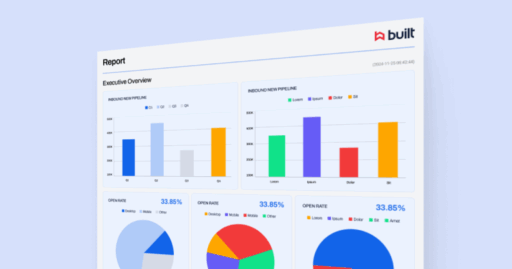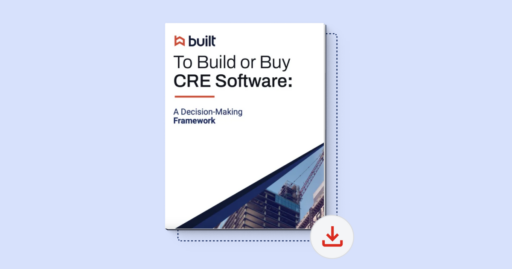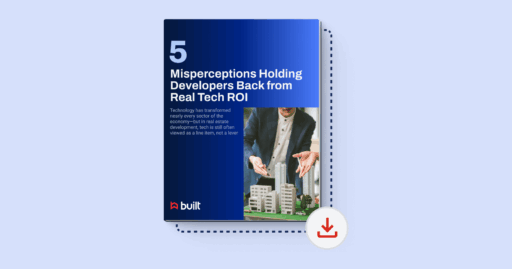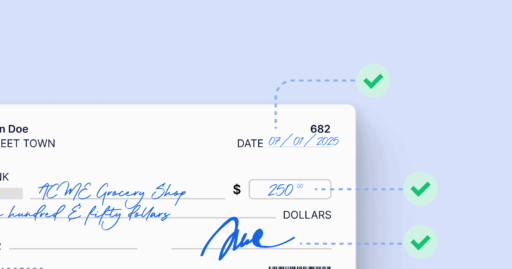Built Voices: An Interview with Billy Olson

Lenders come in all shapes and sizes, with varied needs and unique processes. In order to best serve our clients, we need someone who’s been in their shoes and knows the ins and outs of their everyday lives. Billy Olson is that person. He joined us in December after spending nearly two decades with Wells Fargo and is instrumental in helping us to better serve our lender clients. Billy offers his story and perspective since coming to Built.
What attracted you to Built?
I was at Wells Fargo for 18 years with the intent to spend my entire career with the firm. I really enjoyed the people and the work, but I did not enjoy the homegrown systems being utilized to manage construction loans. While the systems used in many aspects did work, there was also a lot of manual data entry and manipulations needed. It is very difficult to have one platform that services all of the needs a lender requires.
Wells Fargo made the decision to have Built demo their product to see what it had to offer. The platform looked great and had a lot of promise but at the time did not quite meet the needs of Wells’ borrowing based lending loans, at the scale we needed. Still, I was inspired by what Built was doing and could see the opportunity to bring this new platform to a market where nothing existed off the shelf.
A few months later, Chase put a bug in my ear about the possibility of us working together given my experience living and breathing the frustrations of a lender. It was a difficult decision but I knew I had to jump on the chance to ease the pains of lenders around the country.
What does it mean to oversee builder financial solutions?
There are really two parts to what I’m working on. The first part is working with our internal development team to make sure our product really serves the needs of our clients. Given my years with Well Fargo, I feel I have a good grasp on what the market needs — the regulation and compliance requirements and many other aspects of borrowing base and homebuilder finance. Currently, there isn’t a plug and play system that serves all the needs of builder finance. I’m working with our developers and product team to design and implement all those pieces into Built’s platform in a way that serves high-volume lenders.
The second part is working in person with clients. Coming from the lending side, I can help our clients identify their specific pain points and empathize with what they’re dealing with. I’ll lead them through process mapping to identify points of stress and frustration in their processes and show how Built can bring a solution.
I also concentrate heavily on how our platform and improved processes can create efficiency for builders. For many builders today, there is no system to view draw availability instantly or to check on the status of pending collateral. They have to make a phone call or email and wait for a reply. That’s frustrating. It’s a waste of time and it’s inefficient. So I like to speak to the people in the front office of a homebuilder to ask how they choose to work with lenders. If they have 5 or 10 lenders they send collateral requests to, they pick the path of least resistance and select the one that will send a response quickly. Behind the scenes, a lender might get things done quickly but that can sometimes come at the cost of an operations team struggling with technology. With an efficient digital platform, everyone’s lives change.
How would you describe your first few months at Built?
The biggest eye-opener for me has been to see the advantage of working with a small startup team. Having direct access to the development team has been a game changer. In one month with Built, we’ve process mapped and started building out something entirely new that’s going to be really exciting. Things are moving very fast.
Built is nimble and fast and what we’ve accomplished in under a month at Built could potentially take years at a larger organization to try to build in-house.
On the client side, my expectations and assumptions about the lender marketplace are proving to be true. At Wells Fargo, we had our way of doing things, and I didn’t know how others lenders managed their loans. I’ve now had the opportunity to meet with a number of current and prospective clients and can safely say the frustrations at a big lender are the exact same at a smaller lender. That knowledge helps us to build something to really serve the needs of everyone.
What changes have you seen recently in construction lending and what are lenders doing to respond?
Lately, we’ve heard reports that the market is slowing — in some markets the move-up home product appears to be slowing but the entry-level product is static. The question is whether there is a potential for a major decline in the market and, in time, with enough data sets in Built we could potentially forecast economic events.
A lot is going into this. Interest rates were lower in early 2018, proving valuable for higher end construction to consumers. As rates slowly increase, it is likely consumers are holding off to see what happens.
Living in Dallas, I’m looking at my specific market. What are builders seeing? Higher-end construction — the move-up homes and second homes — is slowing down and in some cases they are giving concessions. Meanwhile, entry-level product is static, not increasing or declining in volume. So what are they going to do? Scale back the higher-end product and focus more on entry-level? I’m not sure. The Wall Street Journal published an article in late November of 2018 stating the housing boom is coming to an end and starting in Dallas, TX. Not sure if this is true, but we will continue to monitor all markets.
Tell us a little more about you. What do you like to do in your free time?
I currently live in Texas and enjoy being close to my family here. For fun, I like clay shooting and golfing. I know it’s cliché but it’s true, golfing is a tremendous way to get out and meet people and network in the financial industry (bringing my “A” game is a whole other issue).
{{cta(‘a9f4b7fc-ff96-4aa7-9b3d-b9a9b89abf60’)}}






